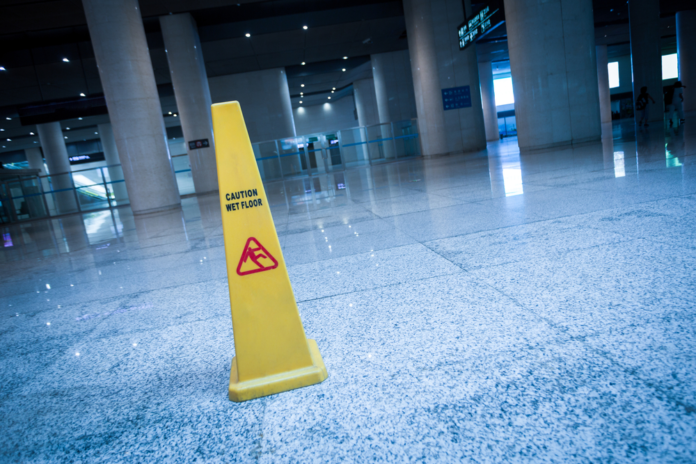After a slip and fall on another person’s property, it takes diligence to recover damages. To illustrate, you will need evidence showing a dangerous condition existed on the property that neither the owner nor manager recognized; in turn, their lack of knowledge led to your injury. A slip and fall lawyer can help you assemble the evidence in a way that demonstrates your need for financial compensation.
Ask a Slip and Fall Lawyer: 7 Types of Evidence That Can Help You
Table of Contents
1. Photographs
Photos can be vital in proving your slip and fall case. They essentially show the conditions that led to your fall, meaning you should take them as quickly as possible. If you cannot return to the accident scene because of your physical health, you might ask a family member or friend to go in your place. Regardless of who takes the photos, it’s important to get various angles to offer a more complete perspective.
Following a slip and fall, most property owners move quickly to fix the faulty condition. This might mean repairing a broken porch, cracked walkway, or obstructed path. The property owner’s instinct to react with speed is beneficial because it can prevent future accidents; however, it can also damage your claim as fixing the problem destroys your evidence.
Don’t Delay
Again, we recommend you take photos as soon as possible with clear shots of the entire location or building. Also include the address, if possible, for reference. Videos are another option and can be particularly useful for providing a 360-degree view of the area.
2. Surveillance Camera Footage
Most public locations like malls, grocery stores, and restaurants have surveillance cameras with wide angles. This means your slip and fall accident may have been recorded by a camera on the premises or nearby.
Whether you do so immediately following your accidents or when you return to the scene, scout the area for a camera and then ask the location’s manager for a copy of the footage. Give the date and time of your accident so the footage can be easily retrieved.
3. Witness Statements
Slip and fall accidents represent the number one reason for emergency room visits in the U.S. Most of these incidents, which average over 8 million per year, have witnesses that can attest to the nature of your accident. Witnesses include those who:
- Repair or maintain the property
- Spend time on the property, such as owners or employees
- Were visiting when you fell
If physically able, you can collect witness information immediately after your accident. Simply ask for the names and contact information of all who saw you fall. Your Houston slip and fall lawyer can then ask these witnesses to corroborate your claim.
4. Personal Details
Your own version of events leading to your accident is just as important as an account from others. You will therefore want to record exactly what happened while details are still fresh in your mind (as you may have noted, acting quickly is crucial to all aspects of gathering evidence for your case).
Likewise, you should keep a journal to describe how your injuries and pain impact your daily activities. A journal is equally beneficial for recording:
- Correspondence you have with those involved in your accident, such as the property owner
- Lost work time
- Travel expenses incurred from medical appointments or returning to the scene
- Daily thoughts and feelings, including mental suffering caused by the accident
5. Property Management Records
Owners, managers, and landlords are required to keep a number of records concerning their property. Among these records are those that indicate how the property is maintained and its inspection frequency. Your lawyer can use the legal discovery process to obtain copies of these records and determine if the owner or manager took reasonable measures to ensure the property was safe for visitors.
6. Medical Records
Most of the items listed above will help prove liability in your case. You will similarly want to prove the value of your injuries; if you have the evidence to prove your slip and fall was the result of another’s carelessness, you may be entitled to financial compensation.
The easiest way to attach a dollar figure to your injuries is with copies of your medical records. You will likewise need to provide copies of all relevant bills, including those for physical therapy, emergency room physicians, and medications. Finally, your doctor may be asked to provide written evidence or verbal testimony regarding your potential for future medical costs.
7. Income Statements
It’s a good idea to keep copies of your pay stubs, which can prove especially valuable when proving lost income after a slip and fall. You may also need to present tax returns, invoices, and witness testimony concerning your ability to earn money in the future. This evidence will help showcase your current and anticipated financial well-being.
A preventable accident can seemingly upend your life, but it should not create long-term financial ruin. By gathering the necessary evidence, including photos, witness statements, and medical records, you can help your attorney build an impermeable case. The key is to move as quickly as possible to preserve the integrity of your evidence and memories.
After a slip and fall on another person’s property, it takes diligence to recover damages. To illustrate, you will need evidence showing a dangerous condition existed on the property that neither the owner nor manager recognized; in turn, their lack of knowledge led to your injury. A slip and fall lawyer can help you assemble the evidence in a way that demonstrates your need for financial compensation.


